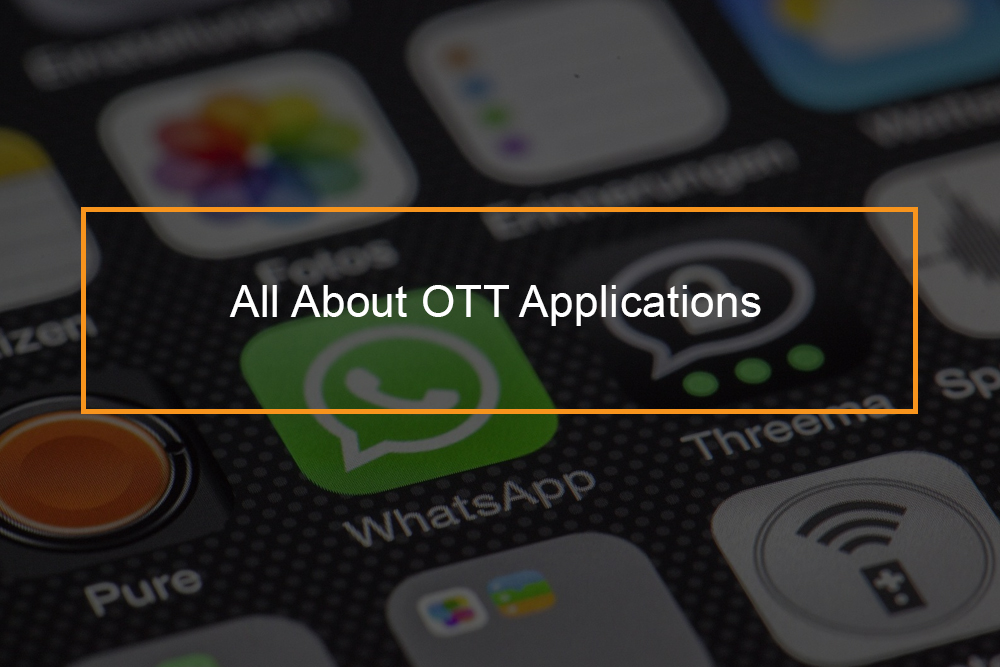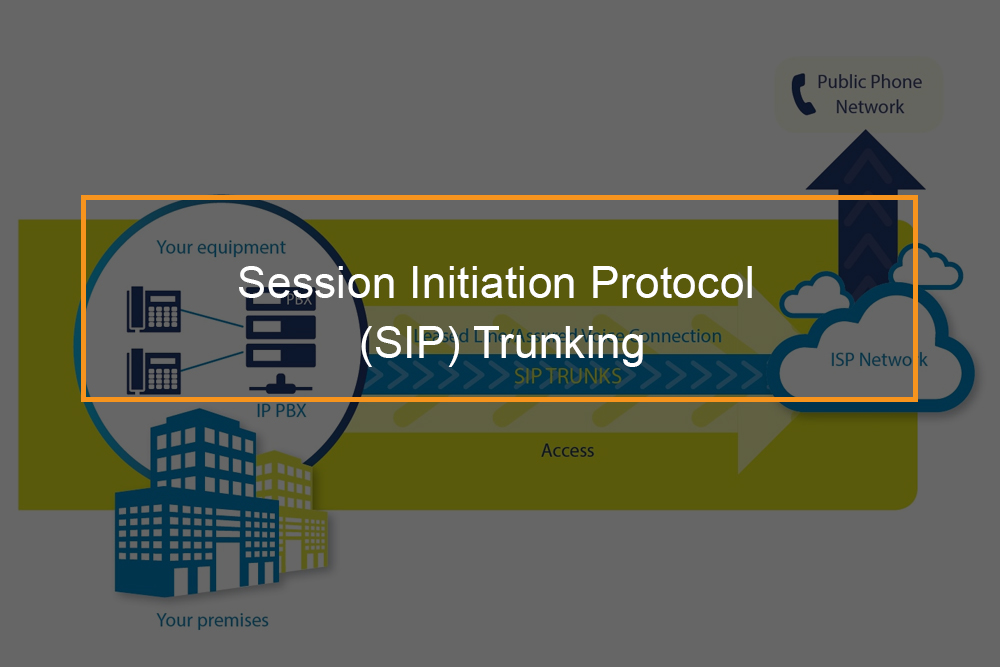What is Application Security and Examples?
The goal of Application security testing is to protect data and software application code from cyber threats. It is advisable to apply for application security during all phases of development, such as deployment, development, and design. Below are ways for your team to promote app security throughout the SDLC – software development life cycle:
- Introduction of security tools and security standards during design and application development phases. For instance, include vulnerability scanning during early development.
- Implementation of security procedures and systems designed to protect applications in production environments. For instance, perform continuous security testing.
- Implementation of solid authentication for applications that hold sensitive data or are mission-critical.
- Using security systems like firewalls, intrusion prevention systems (IPS), and web application firewalls (WAF).
Table of Content:
- What Kind of Applications Does a Modern Organization Need for Security?
- API Security Risks: OWASP Top
- Defining Application Security Testing.
- Forms of Application Security Testing
- Application Security Tools and Security Solutions
- Application Security Best Practices
- App Security with Imperva
What Kind of Applications Does a Modern Organization Need for Security?

- Web Application Security – Many web applications are business-critical and hold sensitive customer data, making them a high priority for cyber security and a valuable target for attackers. Web application software runs on a web server and is accessible through the Internet. The customer runs in a web browser. The application’s nature must accept connections from customers over insecure networks. This exposes them to a variety of vulnerabilities. The Internet evolving has addressed several web application vulnerabilities – like the introduction of HTTPS, which helps create an encrypted communication channel that secures against MitM man in the middle attacks. However, some flaws remain. Because of the growing challenges of web app security, several security vendors have introduced solutions specially designed to secure web applications. Examples are the WAF – web application firewall, a security tool designed to block or detect application-layer attacks.
- Application programming interface Security – APIs are increasingly important. They serve as the basis of modern microservices applications, and an entire application programming interface economy has emerged, permitting organizations to access software security functionality created by others and share data from others. Meaning API security is crucial for modern enterprises. APIs that are afflicted from security weaknesses cause significant data breaches. Potentially, you expose sensitive data and disrupt critical business operations. Usually, security weaknesses of application programming interfaces include failure to perform rate limiting, weak verification, and unwanted exposure of data, which allows for API abuse. The necessity for API security has led to the development of specialized tools such as web app security to identify weaknesses in APIs and help secure application programming interfaces in production.
- Cloud-Native Application Security – Cloud-native applications are applications built in a web services architecture using virtual machines, containers, and serverless platforms. Cloud-native security is a complex challenge because cloud-native applications have many moving parts, and sections tend to be ephemeral—often torn down and replaced by others. This makes it challenging to gain visibility over a cloud-native environment and ensure all parts are secure. In cloud-native applications, environments and infrastructure are usually set up automatically based on declarative configuration—this is referred to as IaC infrastructure as code. Application developers build declarative configurations and application code, and both should be subject to security considerations. Shifting justify is much more critical in cloud-native environments because almost everything is determined at the development stage. Cloud-native applications can benefit from traditional testing tools, but these tools are not enough. Dedicated cloud-native security tools are needed to instrument container clusters, report on security issues, provide a quick feedback loop for developers and serverless functions. Another critical aspect of cloud-native security is automated scanning of all artifacts at all software development lifecycle stages. Most importantly, businesses must scan container images at all phases of the software development process.
- Broken Access Control – Broken access control permits threats and users to gain unauthorized access and privileges. Here are the most frequent challenges faced:
- It permits attackers to gain unauthorized access to user accounts and act as regular users or administrators.
- It provides users with unauthorized privileged functions.
- You can remediate this issue by implementing robust access mechanisms that ensure each role is clearly defined with isolated privileges.
- Cryptographic Failures – Cryptographic failures (previously known as “sensitive data exposure”) occur when data is not adequately protected in rest and transit. It can expose credit card numbers, personal data, passwords, and health records. This web application security risk can result in non-compliance regarding data privacy regulations, for instance, the EU GDPR – EU General Data Protection Regulation, and financial standards like PCI DSS – PCI Data Security Standards.
- Injection (such as LFI, SQL Injection, and XSS) – Injection weaknesses permit threat actors to send malicious data to a web application interpreter. This causes the data to be compiled and executed on the server. SQL injection is a typical form of injection. Applications are commonly not enabled with the basic application security controls against critical threats. Insecure design covers many application weaknesses due to ineffective or missing application security controls. While you can repair implementation flaws in applications with secure design, it is impossible to improve insecure methods with proper configuration or remediation.
- Security Misconfiguration (for instance, XXE) – Security misconfigurations occur because of a lack of security hardening across the application stack. Here are typical security misconfigurations:
- XML External Entities (XXE) flaws
- Improperly configuring cloud permissions
- Leaving unrequired features enabled or installed
- Using default passwords or admin accounts
- Vulnerable and Outdated Components – Vulnerable and outdated parts (previously known as “using components with known vulnerabilities”) include any flaw resulting from unsupported or obsolete software. This happens when you use or build an application without prior knowledge of its version and internal components.
- Identification and Authentication Failures – Authentication and identification failures (also called “broken authentication”) include any security problem related to user identities. You can protect against exploits and identity attacks by setting up authentication and verification for uniqueness and establishing secure session management.
- Software and Data Integrity Failures – Data integrity and software failures happen when infrastructure and code are vulnerable to integrity violations. Sensitive data modification and CI/CD pipeline changes are not validated during software updates. Unauthorized access can be caused by insecure CI/CD pipelines resulting from supply chain attacks.
- Security Logging and Monitoring Failures – Monitoring and logging are vital to identifying breaches. Security monitoring and logging failures (known as “insufficient logging and monitoring”) happen when application weaknesses cannot be correctly detected and respond to security risks. When these mechanisms stop working, it hinders the application’s visibility and compromises alerting and forensics.
- Server-Side Request Forgery – SSRF Server-side request forgery vulnerabilities happen when a web application does not validate a URL inputted by a user prior to pulling data from a remote resource. It can have an effect on firewall-protected servers and any network ACL – access control list that does not validate URLs.
API Security Risks: OWASP Top

APIs permit communication between varied pieces of software. Applications with application programming interfaces permit external customers to request services as a solution (SaaS) from the app. APIs are exposed to various weaknesses and threats.
- Broken Object Level Authorization: application programming interfaces frequently expose endpoints handling object identifiers. It creates a broader attack surface Level Access Control issue. Instead, you should check object-level authorization in every function that can access a data center via user inputs.
- Broken User Authentication: Implemented authentication mechanisms done incorrectly can allow unauthorized access to malicious actors. It permits attackers to compromise authentication tokens or exploit an implementation flaw. Once it happens, attackers can either temporarily assume a legitimate user identity or on a permanent basis. This results in the compromise of the system’s ability to identify a client or user, which is threatening to the overall application programming interface security of the application.
- Excessive Data Exposure: Generic implementations frequently lead to exposure of all object properties without pondering on the individual sensitivity of each object. It happens when developers depend on clients to perform data filtering prior to displaying the information to the user.
- Lack of Resources & Rate Limiting: application programming interfaces often do not restrict the quantity or mass of resources a user or customer is permitted to request. But this problem can impact the performance of the API server and result in DoS – Denial of Service. In addition to this, it can create authentication flaws that allow for brute force attacks.
- Broken Function Level Authorization: Authorization flaws allow attackers to gain unauthorized access to the resources of legitimate users or obtain administrative privileges due to overly complex access control policies based on the unidentified separation between the regular and the administrative functions, groups, roles, and varying hierarchies.
- Mass Assignment: Mass assignment is often a result of improperly binding data provided by customers, such as JSON, to data models. It happens when binding occurs without using properties filtering based on an allowlist. It allows attackers to guess object properties, read the documentation, explore other application programming interface endpoints, or provide additional object properties to request payloads.
- Security Misconfiguration: Security misconfiguration commonly happens because of:
- Open cloud storage
- Insecure default configurations
- Ad-hoc or incomplete configurations
- Permissive cross-origin resource sharing (CORS)
- Misconfigured HTTP headers
- Unnecessary HTTP methods
- Verbose error messages that hold sensitive information
- Injection: Injection flaws such as NoSQL injection, command injection, and SQL injection happen when a query or command sends untrusted data to an interpreter. Typically, malicious data trick the interpreter into providing unauthorized access to data or executing unintended commands.
- Improper Assets Management: APIs commonly expose a more significant number of endpoints in comparison to traditional web applications. This nature of APIs means updated and proper documentation becomes essential to security. In addition to this, appropriate hosts and deployed API versions inventory can aid in mitigating the challenges related to deprecated API versions and exposed debug endpoints.
- Insufficient Logging & Monitoring: Insufficient monitoring and logging enable threat actors to escalate their attacks, especially when there is ineffective or no integration with incident response. It permits malicious actors to maintain persistence and pivot to other systems where they tamper, extract, or destroy data.
Defining Application Security Testing

Also referred to as AST – App Security Testing is the process of making applications more resilient to security threats (such as cyber criminals and malware) by identifying and remediating security flaws. At the start, AST was a manual process. When dealing with modern, high-velocity development processes, AST must be automated. The increased modularity of enterprise software plus numerous open source components. Among these, many known weaknesses and threat vectors have made automation essential. Most businesses utilize a combination of application security tools to conduct AST.
Key Considerations You Should Take Before Testing Applications
Listed below are key considerations before you can adequately test applications for security vulnerabilities:
- Design a whole inventory of your applications. Understand the sensitivity, business use, and impact of your applications. Make a decision on which applications to test—start from public-facing systems such as the web and mobile applications.
- How to conduct your test. For a successful test application for security flaws, you must determine the following parameters:
Authenticated vs. non-authenticated testing— from an outsider’s perspective, test applications (a black-box approach). There must be a lot of value in performing authenticated testing to discover security issues that affect authenticated users. This can help uncover flaws such as session manipulation and SQL injection.
-
- Which tools to utilize—testing should ideally involve tools that can identify flaws in source code, tools that can test applications for security weaknesses at runtime, and network vulnerability scanners.
- Testing production vs. staging— penetration testing in production is crucial because it can identify security issues that threaten the organization and its customers. Testing in a stage is easier to achieve and allows faster remediation of vulnerabilities. But production testing can have a performance impact.
- Whether it is to disable security systems as you are testing—for most security tests, it is good to disable firewalls, web application firewalls (WAF), intrusion prevention systems (IPS), or at least whitelist IPs of testing tools, otherwise tools can interfere with scanning. However, in a full penetration test, devices should be justify on, and the goal is to scan applications as they avoid detection.
- When should you conduct your test—it is typically advisable to perform security testing during off periods to avoid impacting the performance and reliability of production applications.
- What should you report— several security tools provide highly detailed reports relating to their specific testing domain, and these reports are not consumable by non-security experts. Security teams should identify the most relevant insights from automated reports and present them in a meaningful way to stakeholders.
- Validation testing—a vital component of security testing is to validate that remediations were done as they should be. It is not sufficient for a developer to say the remediation is repaired. It is vital to rerun the test and ensure that the flaw no longer exists or otherwise give feedback to developers.
Learn more in the detailed guide to:
- Dependency management
- Security testing
- Software Development Life Cycle (SDLC)
Forms of Application Security Testing
There are three main kinds of application security tests:
| Black Box Security Testing | In a black-box test, the testing system does not have access to the internals of the tested system. This is the point of view of an outside attacker. A human tester or a testing tool must perform reconnaissance to discover flaws and identify tested systems. Black box testing is precious but is insufficient because it cannot test the underlying security weaknesses of modern applications. |
| White Box Security Testing | White box test, this testing system has complete access to the internals of the tested application. A good example is static code analysis, in which a testing tool has direct access to the source code of the application. White box testing can code quality issues while identifying business logic weaknesses, insecure coding practices, and security misconfigurations. White-box testing also includes dynamic testing, which leverages fuzzing techniques (methodology) to discover unexpected weaknesses and exercise varied paths in the application. The disadvantage of the white-box approach is that not all these flaws will be exploitable in production environments. |
| Gray Box Security Testing | When conducting a gray-box test, the testing system is offered limited access to information when dealing with the internals of the tested application. For instance, you might provide the tester login credentials so that they can test the application layer from the perspective of a signed-in user. Gray box testing can aid in understanding what level of access privileged users have and the level of harm they could do if an account was compromised. The positive is that gray box tests can simulate attackers or insider threats who have already breached the network perimeter. Gray box testing is mainly considered efficient, striking a balance between black and white-box approaches. |
Application Security Tools and Security Solutions

Web Application Firewall (WAF)
A WAF monitors and filters HTTP traffic between a web application and the Internet. While WAF technology does not cover all threats, it can work alongside a suite of security tools to create a holistic defense against different attack vectors. In the OSI model (open systems interconnection model), WAF serves as a protocol layer seven defense that helps protect web applications against attacks such as cross-site forgery, cross-site-scripting (XSS), file inclusion, and SQL injection.
Not similar to a proxy server that proves the identity of client machines via an intermediary, a WAF works like a reverse proxy that protects the server from exposure. The WAF functions as a shield that stands in front of a web application and protects it from the Internet—clients pass through the WAF before they can reach the server.
Runtime Application Self-Protection (RASP)
RASP technology can analyze application traffic and user behavior at runtime. It aims to help in preventing and detecting cyber threats by analyzing weaknesses and vulnerabilities and achieving visibility into application source code.
RASP tools can identify security challenges that have already been made use of, end these sessions, and issue alerts to provide active protection.
Software Composition Analysis (SCA)
SCA tools create an inventory of third-party open-source and commercial components used within software products. It helps learn which parts and versions are actively used and identify severe security weaknesses affecting these parts. Enterprises utilize SCA tools to find third-party components that may hold security challenges.
Static Application Security Testing (SAST)
Static App Security Testing tools assist white box testers in inspecting the inner workings of applications. It involves reporting on identified security weaknesses and examining static source code. Static Application Security Testing can help find issues, such as input validation issues, syntax errors, math errors in non-compiled code, or invalid or insecure references. You can utilize binary and byte-code analyzers to apply SAST to compiled code.
Dynamic Application Security Testing (DAST)
Dynamic Security Testing tools assist black box testers in executing code and inspecting it at runtime. It aids when you are attempting to detect issues that possibly represent security issues. Enterprises use DAST to conduct large-scale scans that simulate several malicious or unexpected test cases. These tests offer reports on the application’s response.
DAST can help identify issues like query strings, the use of scripts, requests and responses, memory leakage, authentication, cookie and session handling, execution of third-party components, DOM injection, and data injection.
Interactive Application Security Testing (IAST)
Interactive App Security Testing tools employ SAST and DAST techniques and tools to detect a broader assortment of security challenges. These tools run dynamically to inspect software while in runtime. It happens from within the application server to review the compiled source code. IAST tools can aid you in making remediation easier by providing information about the root cause of vulnerabilities and identifying specific lines of affected code. These tools are used to source code, analyze data flow, third-party libraries, and configuration. You can also utilize IAST tools for API testing.
Mobile Application Security Testing (MAST)
Mobile App Security Testing tools employ different techniques to test the security of mobile apps. Such as investigating forensic data collected via mobile applications and using static and dynamic analysis. Businesses use MAST tools to check security vulnerabilities and mobile-specific issues, such as jailbreaking, data leakage from mobile devices, and malicious WiFi networks.
CNAPP
A cloud-native application protection platform (CNAPP) provides a centralized control panel for the tools required to protect cloud-native applications. It unifies CSPM – cloud security posture management and CWPP cloud workload protection platform with other capabilities. CNAPP technology frequently incorporates API discovery and protection, identity entitlement management, and automation and orchestration security for container orchestration platforms like Kubernetes.
Application Security Best Practices

Below are several best practices to help your team effectively practice application security.
Perform a Threat Assessment
Possessing a list of sensitive assets to protect can help you understand your organization’s threats and how to prevent them. Consider what techniques a hacker can use to compromise an application, whether existing security measures exist, and if you need additional tools or defensive measures.
It is also crucial to be realistic about your security expectations. It is impossible to be unhackable even with the highest level of protection. It is essential, to be honest about what you think your current team can sustain over the long term. If you push too hard, your team may ignore safety standards and practices. Bear in mind that safety is a long-term endeavor, and you require the cooperation of other employees and your clients.
Shift Security justify
Organizations are transitioning from annual product releases to monthly, weekly, or daily releases. Security testing must be a component of the development cycle to accommodate this change and an additional afterthought. This way, security testing is not in the way when you release your product.
An excellent first step before making these changes is to help security staff understand development processes and build relationships between security and development teams. Security staff need to learn the tools and processes used by developers to integrate security organically. Developers are likely to embrace and build trust with security when it is seamlessly integrated into the development process. It is advisable to get means to automate security testing for CI/CD pipelines. Integrating automated security tools into the CI/CD pipeline permits developers to quickly fix vulnerabilities a short time after they introduce the relevant changes.
Prioritize Your Remediation Ops
It is becoming increasingly challenging for software developers to address remediation’s of all issues because vulnerabilities are growing. Given the range of the task at hand, prioritization is crucial for teams that want to keep applications safe. When dealing with open source vulnerabilities, you need to know whether proprietary code uses the vulnerable feature of open source components. Effective prioritization needs performing a threat assessment based on the severity of the weakness—using CVSS ratings and other criteria, like the operational significance of the affected application. If your product never invokes the function of the weak part, then its CVSS rating is significant, but there is no impact and no risk.
Measure Application Security Results
It is vital to measure and report the success of your application security program. Identify the most critical metrics to your key decision-makers and present them in an actionable and straightforward understanding of how to get buy-in for your program.
Giving executives numerous metrics at an early stage can be unnecessary and overwhelming. The main aim is to show the impact of reducing risks and vulnerabilities, indicating how the app security program is compliant with internal policies, and increasing application resilience.
Manage Privileges
It is essential to limit privileges, especially for mission-critical and sensitive systems. App security best practices restrict access to applications and data to those who need them when they need them—this is known as the least privilege principle. The least privilege is critical for two reasons: Hackers are likely to compromise less privileged accounts, so it is vital to ensure that they are unable to gain access to sensitive systems. Bear in mind that insider threats are dangerous, similar to external attackers. If insiders go wrong, it is essential to ensure that they never have more privileges than they should— this limits the damage they can do.
App Security with Imperva

Imperva offers comprehensive protection for microservices, applications, and APIs:
Web Application Firewall: Prevent attacks with world-class web traffic analysis to your applications.
Runtime Application Self-Protection (RASP) – Real-time attack prevention and attack detection from your app runtime environment go wherever your applications are. Prevent injections and external attacks and reduce your vulnerability backlog.
API Security: Automated API protection ensures your application programming interface endpoints are secured as they are published, shielding your applications from exploitation.
Advanced Bot Protection: Prevent business logic attacks from all access points – APIs, websites, and mobile apps. Gain both seamless control and visibility over bot traffic to stop online fraud via competitive price scraping or account takeover. Emerging agile IT and DevOps – DevSecOps.
DDoS Protection: Developers can block attack traffic at the edge to ensure business continuity with no performance impact and guaranteed uptime. Secure your cloud-based and on-premises assets – whether you are hosted in Microsoft Azure, Google Public Cloud, and AWS.
Attack Analytics: Ensures complete visibility with machine learning and domain expertise across the application security stack to reveal patterns in the noise and detect application attacks, enabling you to isolate and prevent attack campaigns.
Client-Side Protection: Gain visibility and control over third-party JavaScript code to reduce the risk of supply chain fraud and prevent data breaches and client-side attacks.










